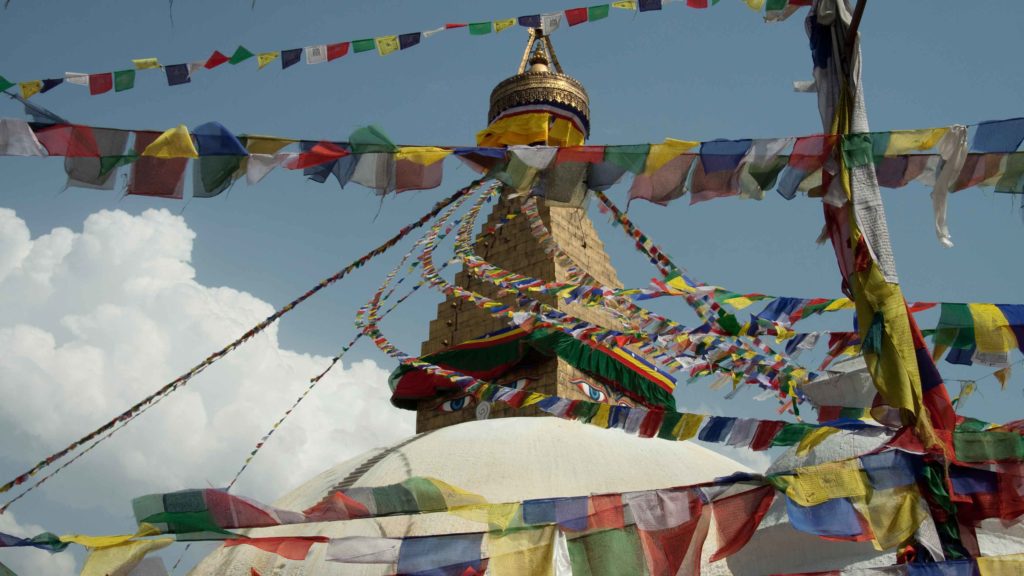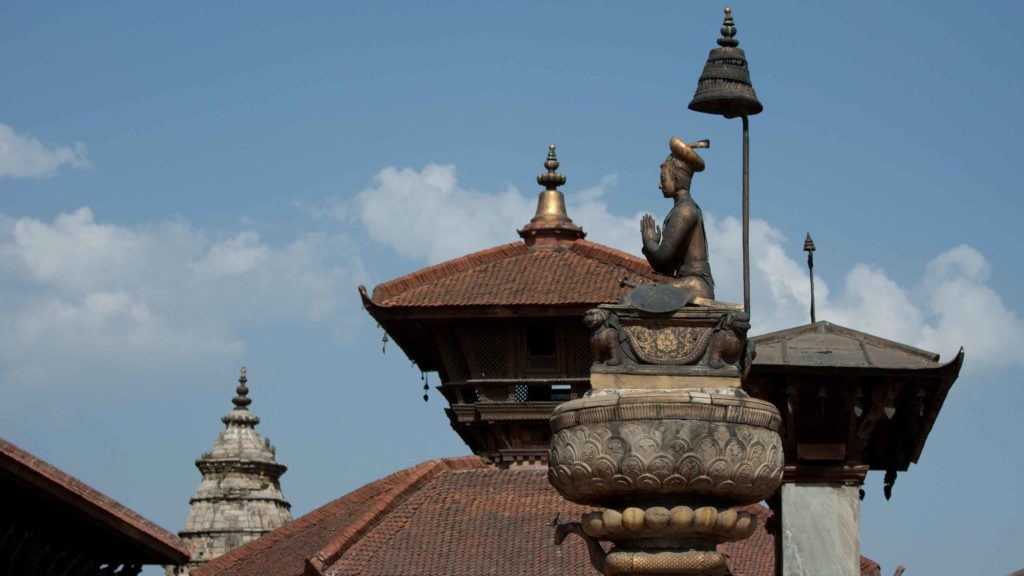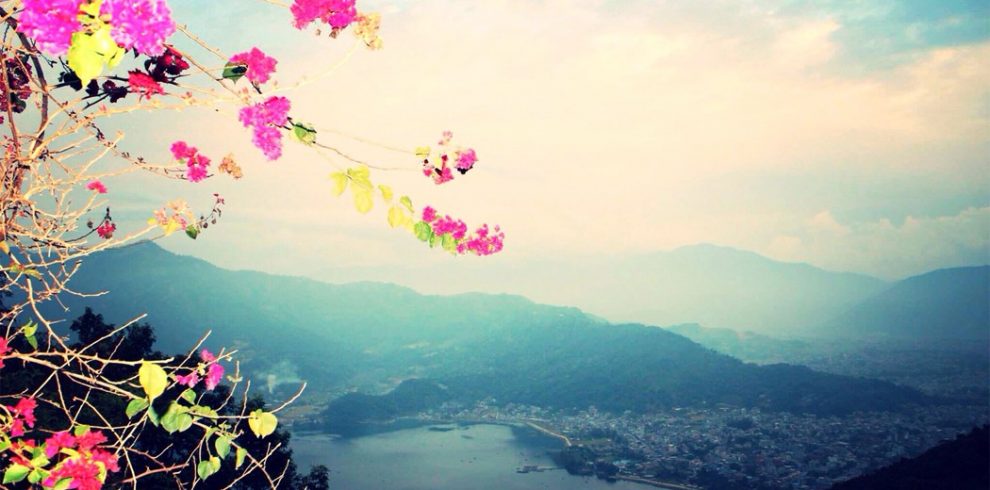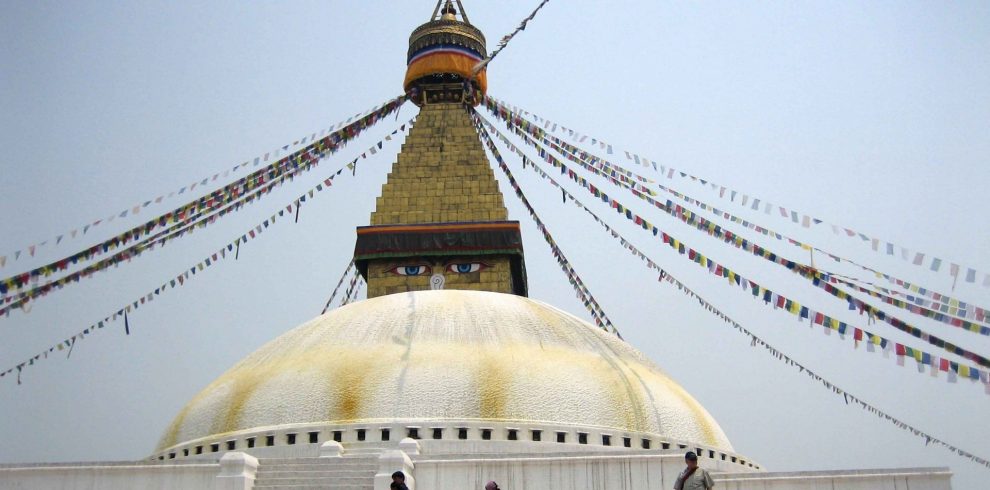Swayambhunath is located approximately 4 kilometers and this Buddhist Stupa is said to be 2000 years old. The Stupa which forms the main structure is composed of a solid hemisphere of brick and earth supporting a lofty conical spire capped by a pinnacle of copper gilt. Painted on the four sided base of the spire are the all-seeing eyes of Lord Buddha. This hill is a mosaic of small Chaityas and Pagoda temples. Pashupatinath: Situated 5 kilometers east of Kathmandu City, Pashupatinath temple is one of the holiest temples dedicated to Lord Shiva. Situated amidst a lush green natural setting on the bank of the sacred Bagmati river, the temple built in pagoda style has jilted roof and richly carved silver doors. Visitors will be permitted to view the temple from the east bank of Bagmati River, entrance in the temple being strictly forbidden to all non-Hindus any foreigners expect Hindu Indian. Pashupatinath is the centre of annual pilgrimage on the day of shivaratri which falls in the month of February/March. Behind the temple are the cremation grounds. After Pashupatinath we head towards Boudhanath, another magnificent pagoda style Buddhist stupa famous for its nickname “The little Tibet”. Boudhanath: This Stupa, 8 kilometers east of Kathmandu City, is one of the biggest in the world of its kind. It stands with four pairs of eyes in the four cardinal direction keeping watch for righteous behavior and human prosperity. This Buddhist Stupa was built by King Man Deva at the advice of the Goddess Mani Jogini. It is built on an octagonal base inset with prayer wheels. The shrine is ringed by houses of Lamas or Buddhist priest.
Itinerary
Expand/Close
Arrival at Tribhuvan International Airport, Kathmandu, Nepal. Then you will be transferred to your hotel. You stay overnight at hotel. Preparation for next day tour.
Swayambhunath is located approximately 4 kilometers and this Buddhist Stupa is said to be 2000 years old. The Stupa which forms the main structure is composed of a solid hemisphere of brick and earth supporting a lofty conical spire capped by a pinnacle of copper gilt. Painted on the four sided base of the spire are the all-seeing eyes of Lord Buddha. This hill is a mosaic of small Chaityas and Pagoda temples.
Pashupatinath: Situated 5 kilometers east of Kathmandu City, Pashupatinath temple is one of the holiest temples dedicated to Lord Shiva. Situated amidst a lush green natural setting on the bank of the sacred Bagmati river, the temple built in pagoda style has jilted roof and richly carved silver doors. Visitors will be permitted to view the temple from the east bank of Bagmati River, entrance in the temple being strictly forbidden to all non-Hindus any foreigners expect Hindu Indian. Pashupatinath is the centre of annual pilgrimage on the day of shivaratri which falls in the month of February/March. Behind the temple are the cremation grounds. After Pashupatinath we head towards Boudhanath, another magnificent pagoda style Buddhist stupa famous for its nickname “The little Tibet”.
Boudhanath: This Stupa, 8 kilometers east of Kathmandu City, is one of the biggest in the world of its kind. It stands with four pairs of eyes in the four cardinal direction keeping watch for righteous behavior and human prosperity. This Buddhist Stupa was built by King Man Deva at the advice of the Goddess Mani Jogini. It is built on an octagonal base inset with prayer wheels. The shrine is ringed by houses of Lamas or Buddhist priest.
5 kilometers away from Kathmandu city Patan also known as Lalitpur, is the city of fine arts, enclosed within 4 stupas said to be built in 3rd century AD, by Emperor Ashoka. You will see the Durbar square; the Krishna Temple built by Kind Siddhi Narsingh Malla, Hiranya Varna Mabavihar and Mahadouddha Temple. A trip to The Tibetan Refugee Camp and the Handicraft Center will also be done while visiting Patan, where you will witness the hand weaving of Tibetan carpets and mounding of metal statues. The main attractions in Patan Beside above mentioned places to visit there are other significant sites to be visited:
a) Golden Temple
b) Kumbheshwar
c) Krishna Mandir
d) Jagat Narayan
e) Mahaboudha
f) Ashokan Stupa
g) Machchhendranath Temple
h) The Tibetan Camp
Bhaktapur (1,401m) covers an area of four square miles. Bhaktapur or the city of devotees still retains a medieval charm and visitors to this ancient town are treated to myriad wonders of cultural and artistic achievements. The past glory of the Malla rules continues to be reflected at the Darbar Square. Pottery and waving are its traditional industries. Bhaktapur is famous for woodcarving and the traditional topi or cap. The city lies about 14 km east of Kathmandu. The places of interest include Bhaktapur Darbar Square, the National Art Gallery, Nyatapola Temple, Bhairavnath Temple, Dattatreya Temple and Dattatreya Square.
Drop to Tribhuvan International Airport, Kathmandu, Nepal.






Write a Review
You must be logged in to post a comment.